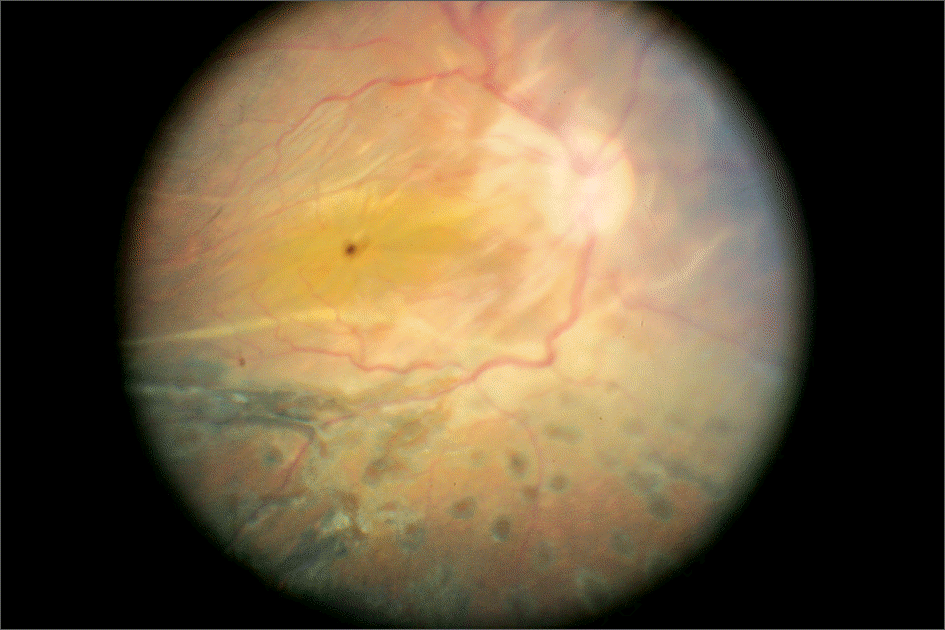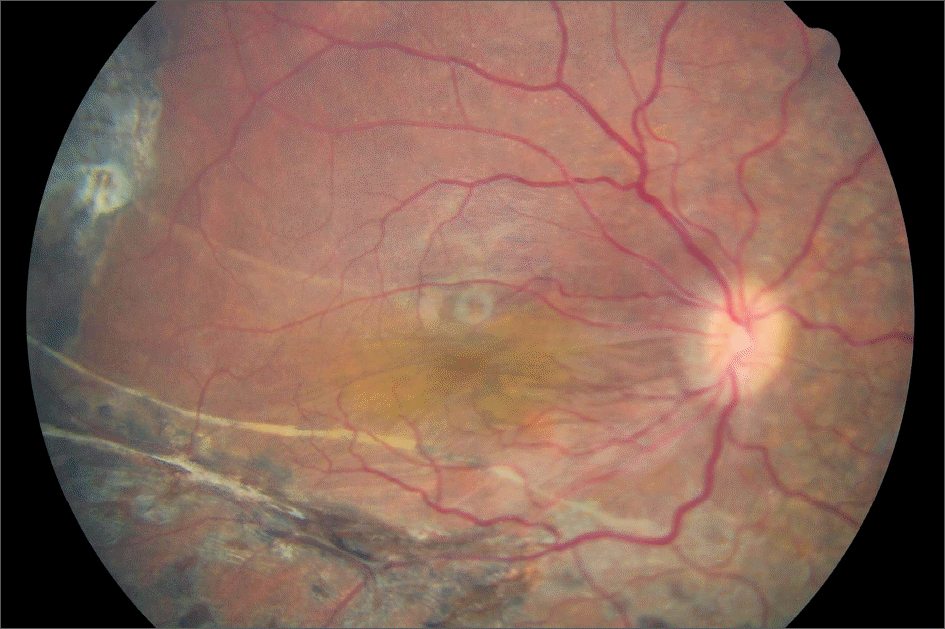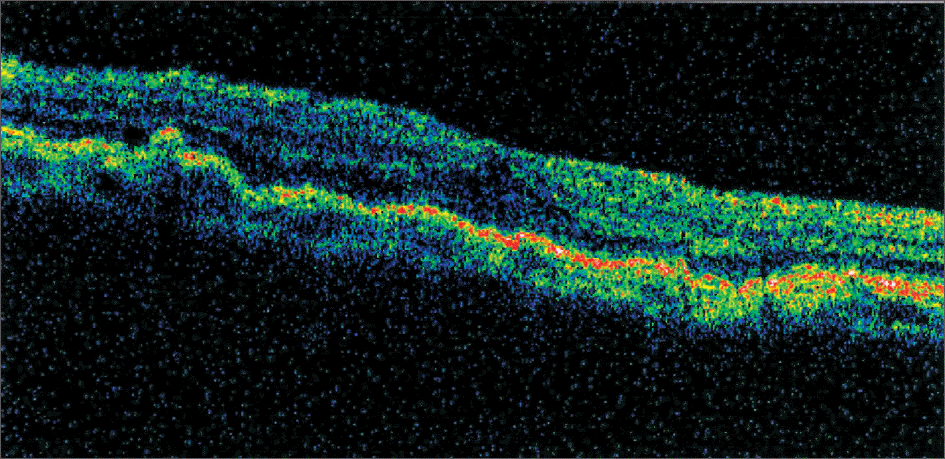Abstract
Purpose
To report a case of hypotony maculopathy after silicon oil removal treated by intravitreal gas injection.
Case summary
A 35-year-old women presented with decreased visual acuity of the right eye for two weeks. Retinal detach-ment with peripheral retinal tears was observed in the patient's right eye. Pars plana vitrectomy including lensectomy, endolaser photo-coagulation and silicone oil injection was performed. Silicone oil removal was performed to improve patient's visual acuity two months after the operation. After the silicone oil removal, visual acuity was decreased to hand motion, and intraocular pressure was decreased below 3 mmHg while observing chorioretinal folding in fundus for two months. Intraviteal C3F8 gas injections were performed three times in the two months after silicone oil removal. After three gas injections, gradual reduction of chorioretinal folding was observed. Visual acuity was improved to 0.2 and IOP was maintained at 8 to 10 mmHg for 18 months after the last gas injection.
References
1. Federman JL, Schubert HD. Complications associated with the use of silicon oil in 150 eyes after retina-vitreous surgery. Ophthalmology. 1988; 95:870–6.
2. Van Meurs JC, Mertens DA, Peperkamp E, Post J. Five-year results of vitrectomy and silicone oil in patients with proliferative vitreoretinopathy. Retina. 1993; 13:285–9.

3. The Silicone Study Group. Vitrectomy with silicone oil or sulfur hexafluoride in eyes with severe proliferative vitreoretinopathy: result of randomized clinical trial: Silicone study report 1. Arch Ophthalmol. 1992; 110:770–9.
5. Gass JDM. Hypotony maculopathy. Contemporary ophthalmology. Baltimore: Williams & Wilkins;1972. p. 343–66.
6. Cairns JD, Anand N. Combined vitrectomy, intraocular micro-surgery and liquid silicone in the treatment of proliferative vitreoretinopathy. Aust J Ophthalmol. 1984; 12:133–8.

7. Hutton WL, Azen SP, Blumenkranz MS, et al. The effects of sili-cone oil removal. Silicone study report 6. Arch Ophthalmol. 1994; 112:778–85.
8. Kampik A, Höing C, Heidenkummer HP. Problems and timing in the removal of silicone oil. Retina. 1992; 12:11–6.
9. Lesnoni G, Rossi T, Nistri A, Boccassini B. Long-term prognosis after removal of silicone oil. Eur J Ophthalmol. 2000; 10:60–5.

10. Casswell AG, Gregor ZJ. Silicone oil removal. II. Operative and postoperative complications. Br J Ophtalmol. 1987; 71:898–902.

11. Pavlovic S, Dick B, Schmidt KG, et al. Long-term outcome after silicone oil removal. Ophthalmologe. 1995; 92:672–6.
12. Gonvers M. Temporary silicon oil tamponade in the management of retinal detachment with proliferative vitreoretinopathy. Am J Ophthalmol. 1985; 100:239–45.
13. Weinberger D, Stiebel H, Lusky M, et al. Intravitreal gas injection for hypotony after cataract surgery. J Cataract Refract Surg. 1998; 24:1490–2.

14. Moon HS, Nam DH, Kim SW. Treatment of hypotony retinopathy with cyclodialysis cleft by intravitreal gas injection. J Korean Ophthalmol Soc. 2006; 47:319–22.




 PDF
PDF ePub
ePub Citation
Citation Print
Print






 XML Download
XML Download